Which non-Austrian destinations can you reach with a Klimaticket?
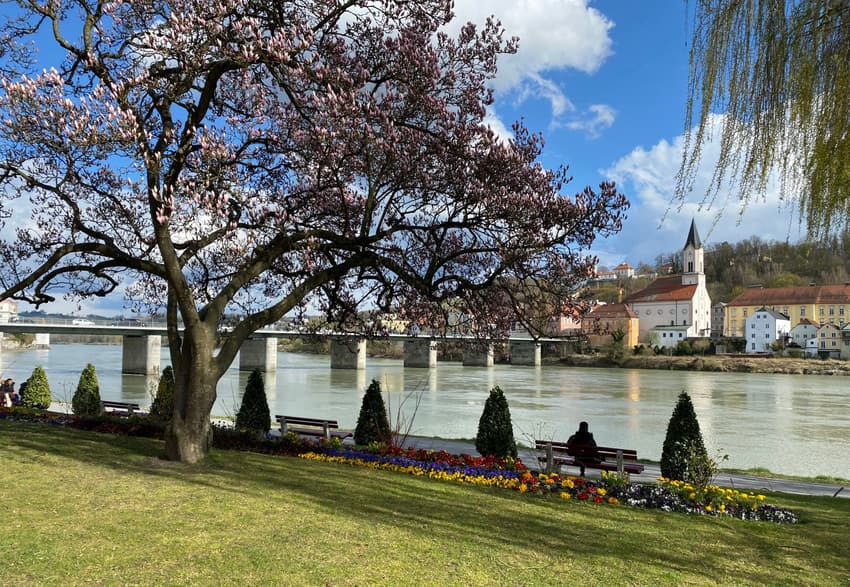
While the yearly KlimaTicket allows travel via local and regional transport across Austria, it's not so widely known that it allows you to cross the border to visit several towns in surrounding countries.
For the equivalent of a maximum of €3 per day, paid a year in advance, you can travel on most trains and public transport throughout Austria with the KlimaTicket.
Additionally, due to agreements between rail operators, there are also some towns outside of Austria that you can reach.
This may be due to funding arrangements, or the vagaries of alpine geography. Whatever the case is, these specific exceptions are noted and identified in the conditions of the KlimaTicket.
Please note that if you wish to travel any further into the neighbouring country, you'll have to buy a ticket with the rail operator servicing that region - but only from the first stop following the border.
We've made a list of some several towns outside Austria that you can reach with the yearly ticket.
READ ALSO: EXPLAINED: How does Austria’s KlimaTicket work?
Passau, Germany
Known as the “City of the Three Rivers,” the Bavarian city of Passau lies just inside Germany, right on its border with Austria. You can reach it by train in just under an hour from Linz.
Getting its nickname from its location right at the confluence of the Danube, Inn, and Ilz rivers – Passau is a picturesque small city of just over 50,000 people. As your ÖBB train pulls into Passau’s central station, you might already be able to get a glimpse of the three copper-green domes of the city’s landmark St. Stephan’s Cathedral.
Inside the cathedral, you’ll find a legendary organ with over 17,000 pipes.
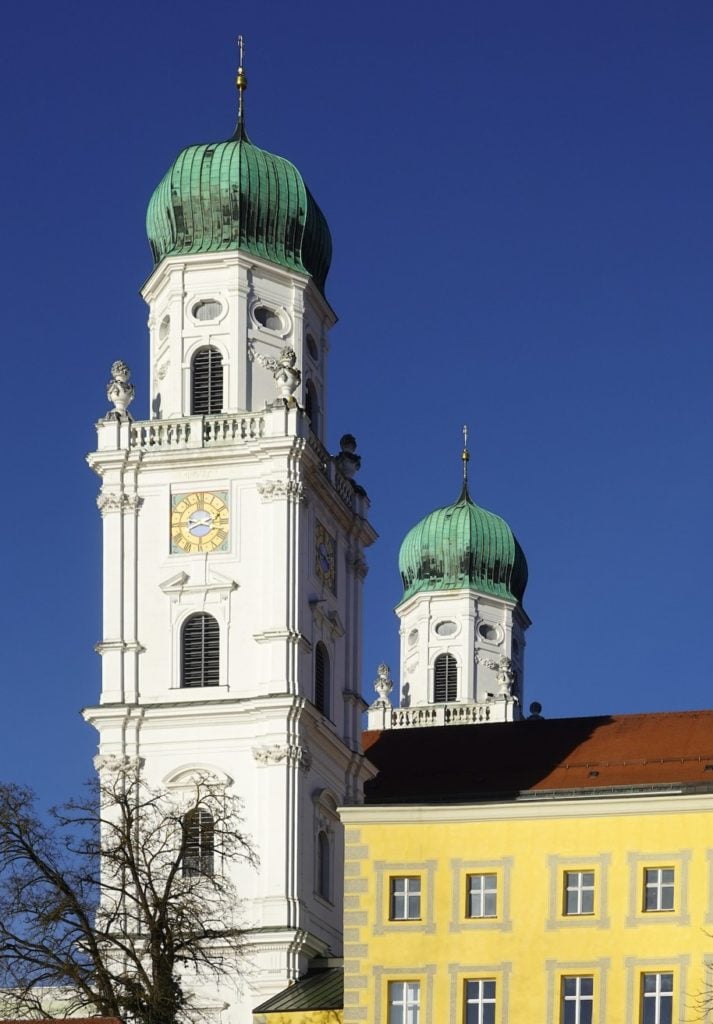
Passau's famous onion-domed cathedral. Photo: Pexels, Magda Ehlers.
The 13th-century Veste Oberhaus fortress overlooks the city, housing an observation tower for a great view and a city museum.
READ ALSO: What are your rights if your trips is delayed of cancelled in Austria?
Buchs, Switzerland
Getting to this alpine beauty in Switzerland’s St. Gallen canton will have you pass through a 25-kilometre-long stretch of picturesque Liechtenstein, characterised by its well-photographed mountaintop castle and stunning river valley – all in a slightly more than a two-hour train ride from Innsbruck.
Once you’re in Buchs, the Liechtenstein town of Schaan lies right across a bridge, just north of the micro-state’s capital of Vaduz. That makes Buchs a great jumping-off point for Liechtenstein. But it also has some appeal in its own right.
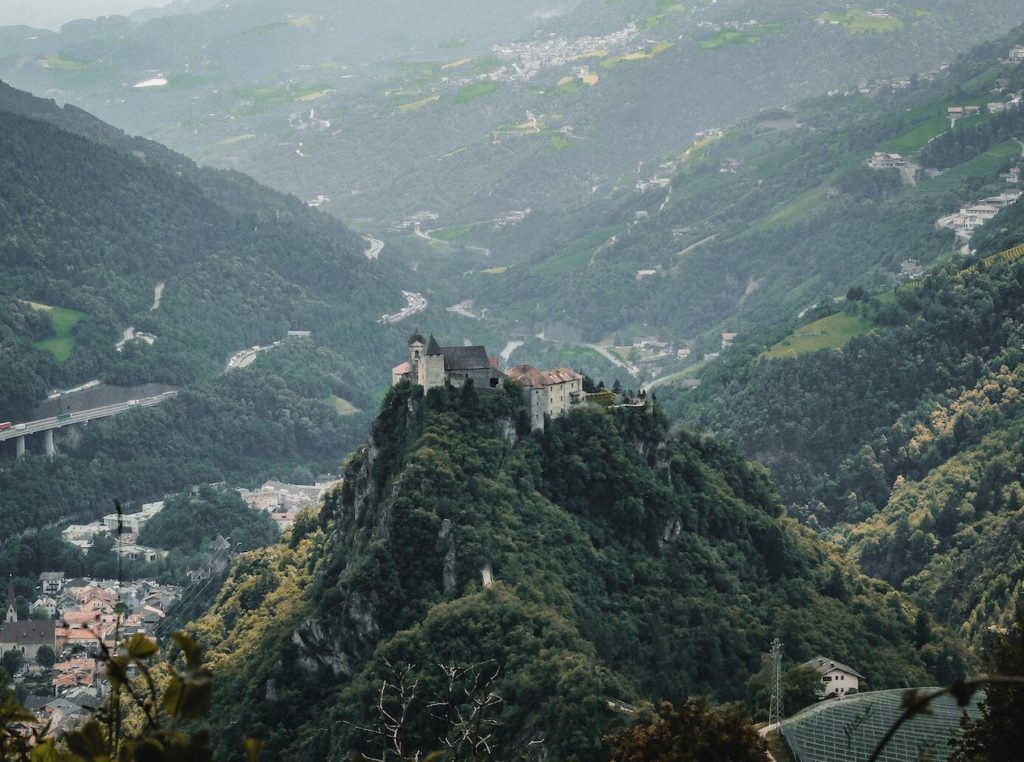
Liechtenstein's famous mountaintop castle, easily accessible from nearby Buchs, Switzerland, using the ÖBB KlimaTicket. Photo: Pexels, Veronica Bertollo
You can sit around Werdenburg Lake to snap a few photos or simply enjoy the view of lakeside Werdenburg Castle, a Swiss cultural heritage site of national significance. The castle originally was the seat of power for the County of Werdenburg in the Holy Roman Empire.
Alpine restaurants and guesthouses also help you take advantage of the great mountain hiking in the area. If you want to travel further into Switzerland, the train will have you in central Zurich in less than two hours.
Lindau and Reutin, Germany
These two border towns just a short trip from Bregenz are famous gateways to the Bodensee, or Lake Constance, the huge lake with shores in Germany, Austria, and Switzerland. Lindau in particular is famously situated on an island, connected to the mainland by both a rail bridge and a car causeway.
Lindau’s island castle is a major draw, as is its harbour containing Bavaria’s only lighthouse. So too is its unrivalled view of the Bodensee, which you can see clearly from almost every angle of the island’s shoreline. Boat companies also operate in Lindau to give you tours of the Bodensee from the water.
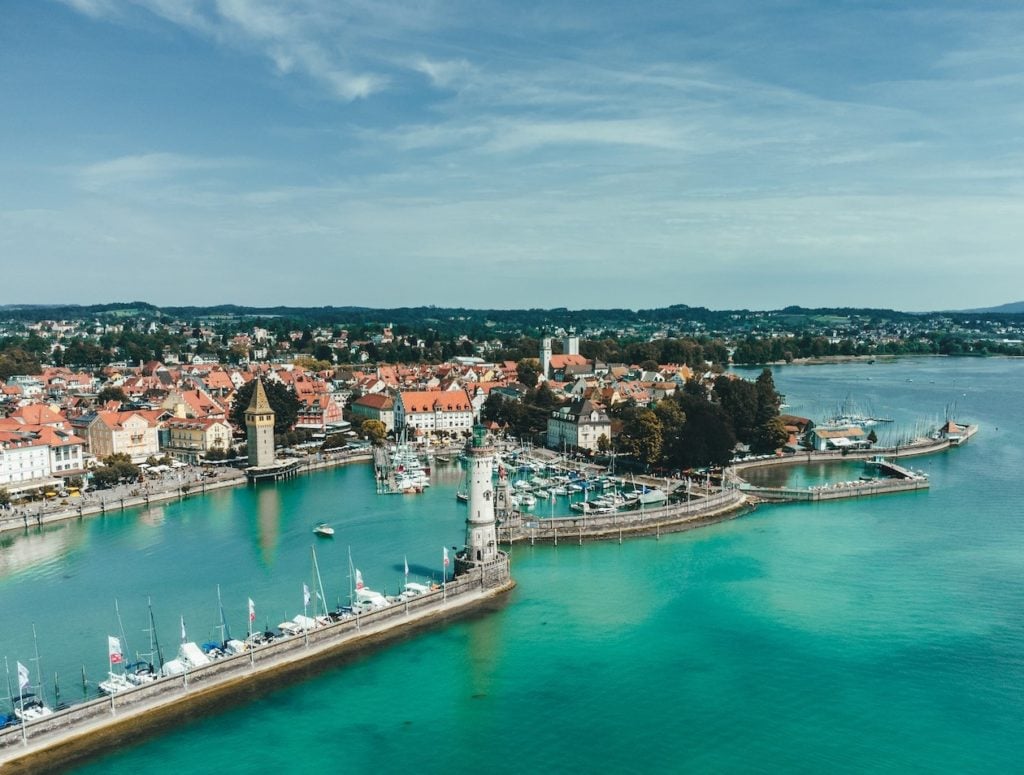
Lindau's picturesque harbour on Lake Constance. Photo: Pexels, Masood Aslami
On land, you can also check out Lindau’s two medieval cathedrals – St. Stephan’s and St. Peter’s – both originally built in 1180 and 1000 AD, respectively. Its historical town hall contains a book archive with many tomes dating back to the 15th century. You can also stroll on Maximilianstrasse to get some shopping in or a bite to eat.
READ ALSO: How to save money while travelling around Austria
San Candido (South Tyrol), Italy
Italy’s South Tyrol region may feel very Austrian at first. That’s because around 62 percent of the entire population there speaks German as a first language, complete with a more or less Austro-Bavarian dialect.
In fact, out of about 116 villages, towns, and cities in South Tyrol – over 100 have a German-speaking majority, with the capital of Bolzano being one of only a very few majority Italian-speaking places in the province. If you’ve picked up some German during your time in Austria, you’ll probably get around here just fine with that.
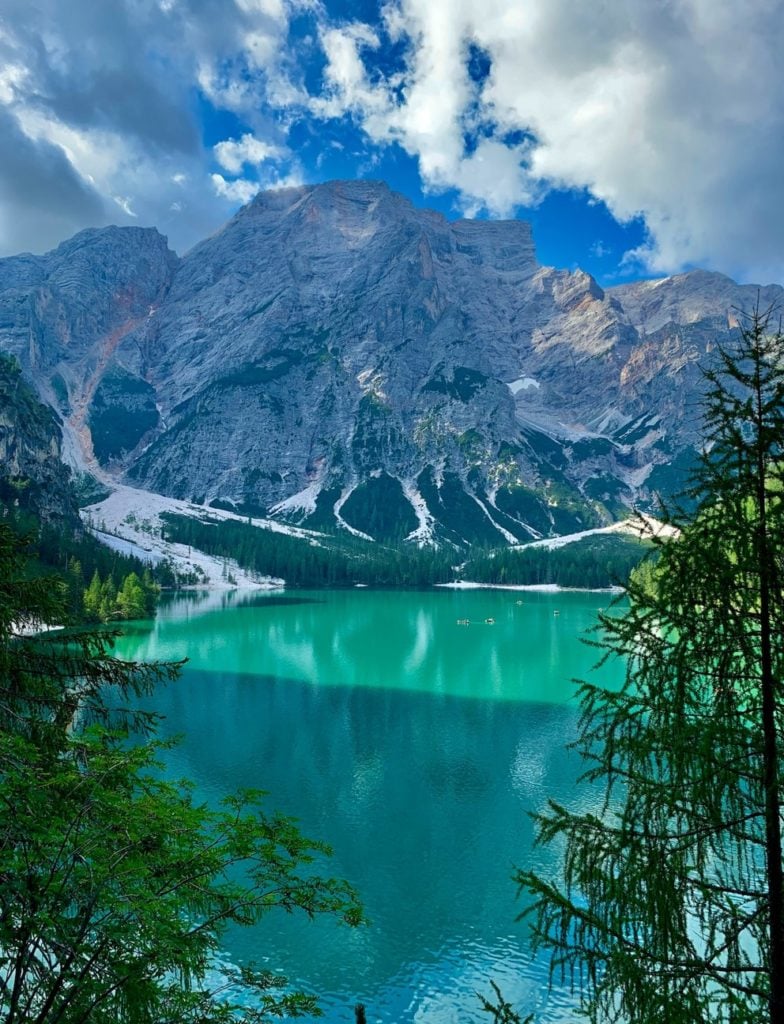
The largely German-speaking South Tyrol region, just across the border from Austria, lies almost entirely in the Italian Alps. Photo: Pexels, Ledana Mance
South Tyrol offers the majestic Alps, with eight mountain ranges that feature peaks of over 3,000 metres in height. You’ll have to go well into the mountains to see most of South Tyrol’s nearly 200 lakes, as most of them are higher up in the peaks.
The good news is that you can use ÖBB, and therefore just your KlimaTicket, to reach San Candido in South Tyrol in just under three hours from Innsbruck. Nestled at the base of gorgeous mountains, there are plenty of hotels and restaurants to give you a comfortable base from which to explore this unique part of Italy, including the nearby famous Dolomite Mountains.
READ ALSO: The ten best destinations by direct night train from Austria
Sopron, Hungary
If you’re looking for an easy visit to wine country, Hungary’s Sopron offers it in a simple ÖBB train trip that’ll run you just over an hour from Vienna or just under three hours from Graz.
Sopron is notable as a Hungarian wine region as its wineries can produce both red and white wines, with Pinot Noir from the area being particularly favoured among wine enthusiasts.
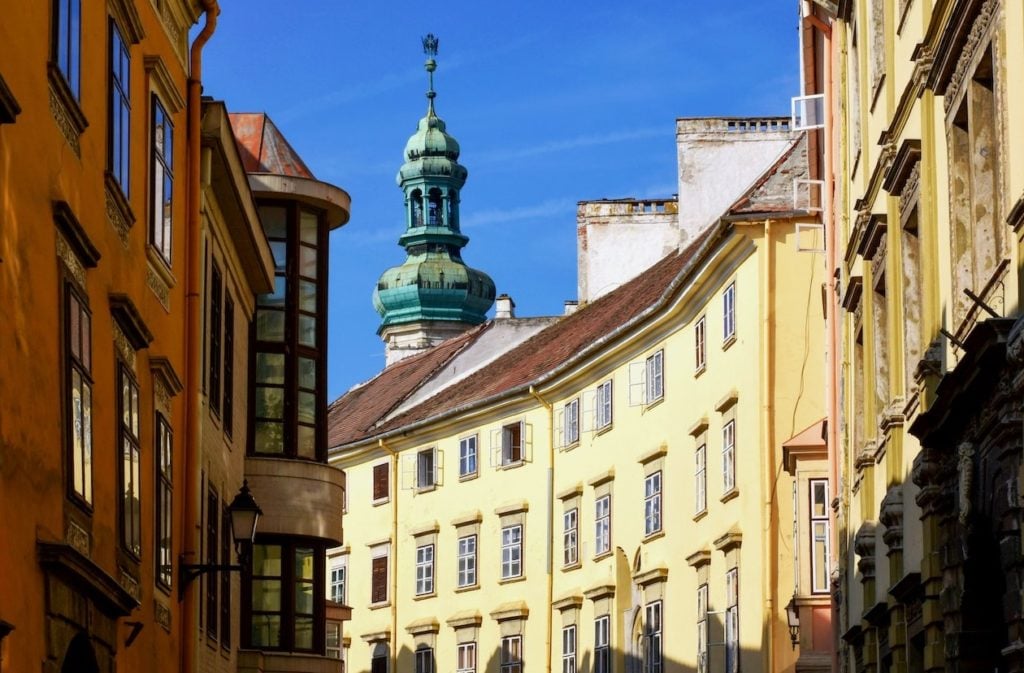
The border town of Sopron in western Hungary lies within a renowned wine region. But the town itself has plenty of history on offer. Photo: Pexels, Istvan Balogh
While beautiful vineyards dot the surrounding area, the town itself has plenty to offer – particularly to history buffs. Originally settled around the 2nd century, you can still find old walls and other evidence dating back to the Roman Empire.
The town square is notable for its 60-metre Firewatch Tower, which you can climb in 116 steps. At the bottom of the tower, you’ll find “Fidelity Gate” – erected in 1922 to commemorate Sopron’s loyalty to Hungary, when the townsfolk rejected Austrian citizenship in a referendum, leaving Sopron as part of Hungary.
READ ALSO: Five of the best weekend getaways from Vienna
Can I travel through Germany between Kufstein and Salzburg on the KlimaTicket?
Yes.
Certain routes will see ÖBB trains travel through enclaves of another country in order to get between two Austrian destinations.
The most notable of these is the so-called Deutsches Eck, or “German Corner,” an enclave of Germany separating Salzburg and Kufstein. The fastest way to get between the two cities is to travel through Deutsches Eck, something ÖBB trains do regularly.
If you travel through Deutsches Eck, you can do so just on your KlimaTicket, provided that your starting and ending destination is within Austria.
This doesn’t mean, however, that these services don’t occasionally see problems, as recent train strikes in Germany leave ÖBB with no choice but to suspend services travelling through Deutsches Eck, and offer alternative shuttles.
Comments
See Also
For the equivalent of a maximum of €3 per day, paid a year in advance, you can travel on most trains and public transport throughout Austria with the KlimaTicket.
Additionally, due to agreements between rail operators, there are also some towns outside of Austria that you can reach.
This may be due to funding arrangements, or the vagaries of alpine geography. Whatever the case is, these specific exceptions are noted and identified in the conditions of the KlimaTicket.
Please note that if you wish to travel any further into the neighbouring country, you'll have to buy a ticket with the rail operator servicing that region - but only from the first stop following the border.
We've made a list of some several towns outside Austria that you can reach with the yearly ticket.
READ ALSO: EXPLAINED: How does Austria’s KlimaTicket work?
Passau, Germany
Known as the “City of the Three Rivers,” the Bavarian city of Passau lies just inside Germany, right on its border with Austria. You can reach it by train in just under an hour from Linz.
Getting its nickname from its location right at the confluence of the Danube, Inn, and Ilz rivers – Passau is a picturesque small city of just over 50,000 people. As your ÖBB train pulls into Passau’s central station, you might already be able to get a glimpse of the three copper-green domes of the city’s landmark St. Stephan’s Cathedral.
Inside the cathedral, you’ll find a legendary organ with over 17,000 pipes.

The 13th-century Veste Oberhaus fortress overlooks the city, housing an observation tower for a great view and a city museum.
READ ALSO: What are your rights if your trips is delayed of cancelled in Austria?
Buchs, Switzerland
Getting to this alpine beauty in Switzerland’s St. Gallen canton will have you pass through a 25-kilometre-long stretch of picturesque Liechtenstein, characterised by its well-photographed mountaintop castle and stunning river valley – all in a slightly more than a two-hour train ride from Innsbruck.
Once you’re in Buchs, the Liechtenstein town of Schaan lies right across a bridge, just north of the micro-state’s capital of Vaduz. That makes Buchs a great jumping-off point for Liechtenstein. But it also has some appeal in its own right.

You can sit around Werdenburg Lake to snap a few photos or simply enjoy the view of lakeside Werdenburg Castle, a Swiss cultural heritage site of national significance. The castle originally was the seat of power for the County of Werdenburg in the Holy Roman Empire.
Alpine restaurants and guesthouses also help you take advantage of the great mountain hiking in the area. If you want to travel further into Switzerland, the train will have you in central Zurich in less than two hours.
Lindau and Reutin, Germany
These two border towns just a short trip from Bregenz are famous gateways to the Bodensee, or Lake Constance, the huge lake with shores in Germany, Austria, and Switzerland. Lindau in particular is famously situated on an island, connected to the mainland by both a rail bridge and a car causeway.
Lindau’s island castle is a major draw, as is its harbour containing Bavaria’s only lighthouse. So too is its unrivalled view of the Bodensee, which you can see clearly from almost every angle of the island’s shoreline. Boat companies also operate in Lindau to give you tours of the Bodensee from the water.

On land, you can also check out Lindau’s two medieval cathedrals – St. Stephan’s and St. Peter’s – both originally built in 1180 and 1000 AD, respectively. Its historical town hall contains a book archive with many tomes dating back to the 15th century. You can also stroll on Maximilianstrasse to get some shopping in or a bite to eat.
READ ALSO: How to save money while travelling around Austria
San Candido (South Tyrol), Italy
Italy’s South Tyrol region may feel very Austrian at first. That’s because around 62 percent of the entire population there speaks German as a first language, complete with a more or less Austro-Bavarian dialect.
In fact, out of about 116 villages, towns, and cities in South Tyrol – over 100 have a German-speaking majority, with the capital of Bolzano being one of only a very few majority Italian-speaking places in the province. If you’ve picked up some German during your time in Austria, you’ll probably get around here just fine with that.

South Tyrol offers the majestic Alps, with eight mountain ranges that feature peaks of over 3,000 metres in height. You’ll have to go well into the mountains to see most of South Tyrol’s nearly 200 lakes, as most of them are higher up in the peaks.
The good news is that you can use ÖBB, and therefore just your KlimaTicket, to reach San Candido in South Tyrol in just under three hours from Innsbruck. Nestled at the base of gorgeous mountains, there are plenty of hotels and restaurants to give you a comfortable base from which to explore this unique part of Italy, including the nearby famous Dolomite Mountains.
READ ALSO: The ten best destinations by direct night train from Austria
Sopron, Hungary
If you’re looking for an easy visit to wine country, Hungary’s Sopron offers it in a simple ÖBB train trip that’ll run you just over an hour from Vienna or just under three hours from Graz.
Sopron is notable as a Hungarian wine region as its wineries can produce both red and white wines, with Pinot Noir from the area being particularly favoured among wine enthusiasts.

While beautiful vineyards dot the surrounding area, the town itself has plenty to offer – particularly to history buffs. Originally settled around the 2nd century, you can still find old walls and other evidence dating back to the Roman Empire.
The town square is notable for its 60-metre Firewatch Tower, which you can climb in 116 steps. At the bottom of the tower, you’ll find “Fidelity Gate” – erected in 1922 to commemorate Sopron’s loyalty to Hungary, when the townsfolk rejected Austrian citizenship in a referendum, leaving Sopron as part of Hungary.
READ ALSO: Five of the best weekend getaways from Vienna
Can I travel through Germany between Kufstein and Salzburg on the KlimaTicket?
Yes.
Certain routes will see ÖBB trains travel through enclaves of another country in order to get between two Austrian destinations.
The most notable of these is the so-called Deutsches Eck, or “German Corner,” an enclave of Germany separating Salzburg and Kufstein. The fastest way to get between the two cities is to travel through Deutsches Eck, something ÖBB trains do regularly.
If you travel through Deutsches Eck, you can do so just on your KlimaTicket, provided that your starting and ending destination is within Austria.
This doesn’t mean, however, that these services don’t occasionally see problems, as recent train strikes in Germany leave ÖBB with no choice but to suspend services travelling through Deutsches Eck, and offer alternative shuttles.
Join the conversation in our comments section below. Share your own views and experience and if you have a question or suggestion for our journalists then email us at [email protected].
Please keep comments civil, constructive and on topic – and make sure to read our terms of use before getting involved.
Please log in here to leave a comment.